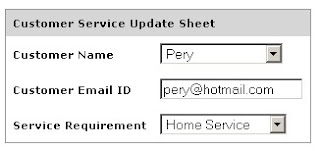One of our client, don't want to load their website inside an iframe any other website. In this case PHP provide an excellent header option to prevent or deny iframe opening of your web pages. In case you are in static html we can use JavaScript to redirect a actual page as browser URL on top.

PHP code to prevent iframe loading on dynamic php pages.
JavaScript code to prevent loading iframe on Static HTML pages

Google is example website for iframe blocking, you did not open Google website in iframe.
PHP code to prevent iframe loading on dynamic php pages.
<?php
// php header to prevent iframe loading of your web page
header("X-FRAME-OPTIONS: DENY");
?>
Example of prevent iframe loading in PHP pages
<?php
header("X-FRAME-OPTIONS: DENY");
?>
<!DOCTYPE html PUBLIC "-//W3C//DTD XHTML 1.0 Transitional//EN" "http://www.w3.org/TR/xhtml1/DTD/xhtml1-transitional.dtd">
<html xmlns="http://www.w3.org/1999/xhtml">
<head>
<meta http-equiv="Content-Type" content="text/html; charset=utf-8" />
<title>Iframe Blocker</title>
</head>
<body>
<h1>Welcome</h1>
</body>
</html>
JavaScript code to prevent loading iframe on Static HTML pages
<script type="text/javascript">
// Prevent iframe loading of your web page and redirect to iframe target.
if( (self.parent && !(self.parent===self))
&&(self.parent.frames.length!=0)){
self.parent.location=document.location
}
</script>
Example of prevent iframe loading in Static HTML pages
<!DOCTYPE html PUBLIC "-//W3C//DTD XHTML 1.0 Transitional//EN" "http://www.w3.org/TR/xhtml1/DTD/xhtml1-transitional.dtd">
<html xmlns="http://www.w3.org/1999/xhtml">
<head>
<meta http-equiv="Content-Type" content="text/html; charset=utf-8" />
<title>Iframe Blocker</title>
<script type="text/javascript">
if( (self.parent && !(self.parent===self))
&&(self.parent.frames.length!=0)){
self.parent.location=document.location
}
</script>
</head>
<body>
<h1>Welcome</h1>
</body>
</html>
















